A Guide to Recovering from Burnout and Preventing the Next One

Founder - Daniel Watson is a creative director and storyteller…
Bouncing Back From The Burnout: Navigating the Shadows of Exhaustion
As the founder of Livid Magazine for the past 13 years, I’ve weathered my fair share of storms in the ever-changing landscape of media and publishing. Through triumphs and setbacks, one challenge has remained constant: the looming specter of burnout. It’s a topic close to my heart, as I’ve witnessed firsthand its devastating effects on myself and those around me. In this guide, drawing from my own experiences and insights gained over the years, we’ll explore the nuances of burnout, from its insidious origins to practical strategies for recovery and prevention. So join me on this journey as we navigate the shadows of exhaustion and emerge stronger, wiser, and more resilient than ever before.
As an entrepreneur, burnout is an occupational hazard. It’s easy to get caught up in the hustle and grind, but it’s essential to prioritize self-care and set boundaries to prevent burnout from derailing your success. Vanessa Marshall, Founder & CEO
Understanding Burnout
Understanding Burnout requires peeling back the layers of exhaustion to reveal its intricate web of physical, emotional, and mental turmoil. It’s not merely feeling overwhelmed, but a relentless storm that clouds the mind drains the body, and extinguishes the flicker of enthusiasm. Like a shadow lurking in the corners of our busiest days, burnout creeps in quietly, its presence insidious yet unmistakable. It erodes our sense of purpose, leaving us adrift in a sea of apathy and disillusionment. Burnout doesn’t discriminate—it can affect anyone, from high-powered executives to stay-at-home parents.
Unpacking the Causes
Unpacking the Causes of burnout unveils a labyrinthine landscape of stressors and pressures, each thread weaving its own narrative of exhaustion. From the relentless demands of modern work culture to the weight of personal expectations, the origins of burnout are as varied as they are insidious. It’s the cumulative effect of incessant deadlines, mounting responsibilities, and a perpetual cycle of striving for unattainable perfection. Yet, beneath the surface, lies a deeper truth: burnout thrives in environments devoid of balance, where the scales tip heavily towards work and away from self-care. Only by unraveling the layers of societal norms and personal beliefs can we confront the root causes of burnout and pave the way for lasting change.
Who’s at Risk?
Who’s at Risk of experiencing burnout encompasses a broad spectrum of individuals, spanning professions, lifestyles, and circumstances. Contrary to popular belief, burnout isn’t reserved for those in high-stress professions or the relentless grind of entrepreneurs but extends its reach to caregivers, students, and creatives alike. Anyone who navigates the turbulent waters of chronic stress, whether from work, relationships, or personal expectations, is susceptible to the insidious grip of exhaustion. From the ambitious freelancer juggling multiple projects to the dedicated parent striving to meet the demands of family life, no one is immune. It’s a silent predator that lurks in the shadows, preying on those who neglect their well-being in pursuit of success or societal approval. Ultimately, recognizing one’s vulnerability to burnout is the first step towards building resilience and reclaiming control over one’s health and happiness.
Working a 9-to-5 job doesn’t exempt you from burnout. The pressure to perform, meet deadlines, and balance work with personal life can take its toll. Don’t ignore the warning signs—seek support and take proactive steps to protect your well-being. – Nick Zviada, Marketing Manager
The Frequency of Burnout
Burnout isn’t a rare occurrence—it’s a pervasive issue affecting millions worldwide. According to recent studies, approximately 67% of full-time employees report experiencing burnout at some point in their careers. Moreover, the COVID-19 pandemic had exacerbated burnout rates, with remote work, economic uncertainty, and social isolation adding additional layers of stress.
Recognizing the Signs
Burnout often starts subtly, manifesting as feelings of fatigue, irritability, and disillusionment. As it progresses, individuals may experience physical symptoms like headaches, insomnia, and gastrointestinal issues. Mentally, fatigue can lead to decreased concentration, memory problems, and feelings of detachment from work or personal relationships. Recognizing these signs early on is crucial for taking proactive steps to address burnout before it escalates.
Spotting Burnout in Others
Identifying burnout in others requires empathy and observation. Look for changes in behavior, such as increased irritability, withdrawal from social interactions, or a decline in work performance. Physical cues like lethargy, weight changes, or frequent illnesses may also indicate burnout. If you suspect someone is struggling, approach them with compassion and offer support without judgment.
Navigating the Burnout Maze
Recovering from burnout is a journey that requires patience, self-awareness, and self-care. Start by acknowledging your feelings and accepting that burnout is not a sign of weakness but a natural response to prolonged stress. Set boundaries to protect your time and energy, prioritizing activities that bring joy and fulfillment. Practice stress-management techniques such as mindfulness, meditation, and exercise to promote relaxation and resilience.
Impact on Mind and Body
The effects of fatigue extend far beyond mental exhaustion—they take a toll on both mind and body. Chronic stress disrupts the body’s hormonal balance, leading to elevated levels of cortisol and adrenaline, which can weaken the immune system and increase the risk of cardiovascular disease. Meanwhile, prolonged emotional strain can contribute to anxiety, depression, and even substance abuse. Recognizing the interconnectedness of mental and physical health is essential for holistic burnout recovery.
Steps to Recovery
Recovering requires a multifaceted approach that addresses both the symptoms and underlying causes.
-
Self-Reflection: Take time to introspect and identify the root causes of burnout, acknowledging your feelings without judgment.
-
Establish Boundaries: Set clear boundaries to protect your time, energy, and mental well-being, learning to prioritize self-care without guilt.
-
Seek Support: Reach out to trusted friends, family members, or mental health professionals for guidance, encouragement, and practical assistance.
-
Rest and Restore: Prioritize restorative sleep, nutritious eating, and gentle exercise to rejuvenate your body and mind, allowing for healing to take place.
-
Reevaluate Priorities: Reflect on your values, goals, and aspirations, making necessary adjustments to align your life with what truly matters most to you
Preventing Future Burnout
While recovering from fatigue is essential, preventing its recurrence is equally crucial. Take proactive steps to create a healthy work-life balance, setting realistic expectations and boundaries to avoid overcommitting yourself. Delegate tasks when possible, and learn to say no to additional responsibilities that could tip the scales towards burnout. Cultivate a supportive network of colleagues, friends, and mentors who can provide guidance and encouragement during challenging times.
Amidst the complexities of contemporary life, burnout stands as a formidable adversary, capable of casting its shadow over even the most resilient souls. Yet, armed with knowledge, awareness, and a steadfast commitment to self-care, we possess the power to transcend its grasp. Through the tumultuous journey of recovery, we unearth hidden reservoirs of strength, resilience, and self-compassion that lie dormant within. It’s a testament to the human spirit’s capacity for renewal and transformation in the face of adversity. As we emerge from the crucible of burnout, we are not merely survivors but alchemists, transmuting pain into wisdom and darkness into light. Let us forge ahead, fortified by our shared experiences and emboldened by the knowledge that, together, we can overcome any obstacle that dares to dim our brilliance.
Related
What's Your Reaction?
Founder - Daniel Watson is a creative director and storyteller based in Brooklyn. He has a passion for crafting compelling content across various mediums, with expertise in marketing, magazine, web, photo, branding, and digital content strategy








